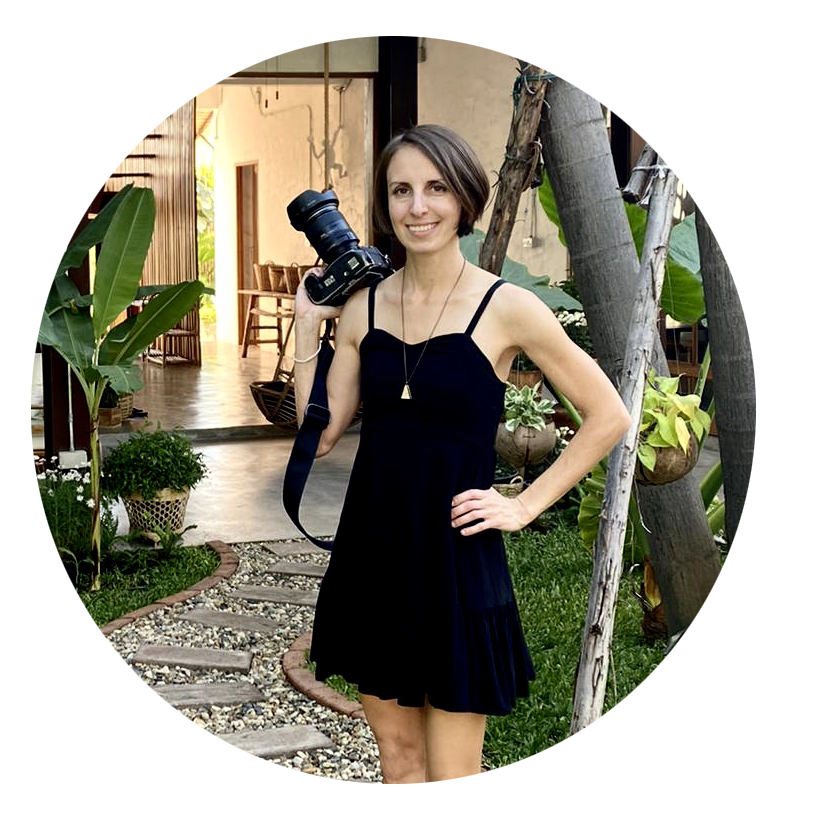I’ve been pounded by waves of nostalgia over the last several months of sitting still. I’m filled with gratitude for all my adventures—both the good and not so good. I wanted to share a few of my favorite travel photographs from the last decade including the backstory and camera settings. One of the hardest parts of being a travel photographer is separating the quality of the moment from the quality of the image. Both of those align in these five images. The story behind these images follow one of two common themes—a quick reaction to a fleeting moment captured with a handful of frames or multiple visits to same spot. I also include some tips on travel photography and my current gear setup at the end.
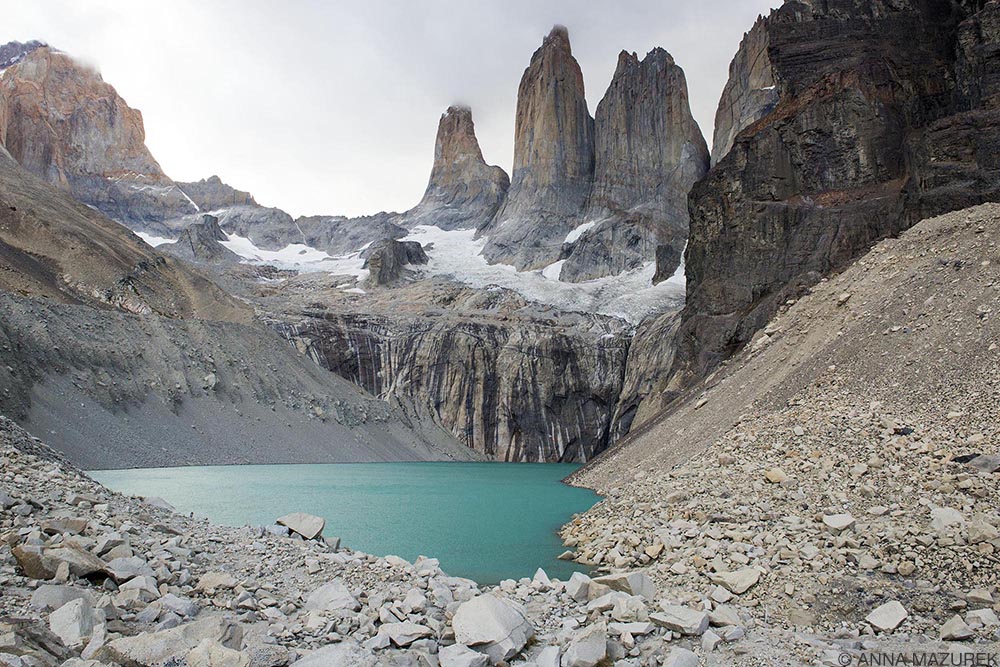
Torres del Paine, Chile
Exposure: f/9 at 1/160 second; ISO 800; 24-70mm lens (shot at 26mm)
The Story: During my seven-month South America trip in 2015, I hiked the roughly 40-mile W Trek at Torres del Paine National Park in the Patagonia region of Chile, which took five days. The jewel of the hike is this view of these three stone towers.
Pull up a chair and let me share the series of unfortunate events that preceded this photo. (It’s even funnier if you pretend that Morgan Freeman is narrating.)
This was my first multi-day hike and the first time I ever had to carry ALL of my supplies (food, tent, etc.). (Thankfully, the water from the streams was drinkable so I didn’t have to carry excess water!) The elevation range varied daily and ranged from 200 to 2,800 feet (the towers), which isn’t too bad. The W Trek is probably a moderate level of difficulty since it doesn’t require any technical climbing skills. The hardest part is the stamina to walk for five days carrying all of your stuff through four seasons of weather.
Since I wasn’t traveling with any proper hiking gear, I had to rent everything even my backpack in the base town of Puerto Natales. Since there were no hiking shoes to rent in my size, I decided to hike in my Nikes. (Cue Morgan Freeman: “This was a terrible decision.”) The minute I got to the trail, the strap on my rented backpack ripped on the top right shoulder – the padding was ripped and only the rope part was still attached to the backpack. I was already inside the park and three hours from the rental shop so there was no going back.
Naturally, I had overpacked. I wish I had weighed the pack, but it was probably close to 30 pounds, which is a lot for someone who weights 115. (Morgan Freeman is currently shaking his head in dismay.) Due to the broken strap and the weight of the pack, I could not get the backpack on unless I had someone help me or I found a high spot to put the pack on so I could easily slip it on while squatting or standing. I literally could not stand from a sitting position with this pack on my back due to weight nor could I pick it up with one arm to sling it on my back due to the broken strap.
The trail was rocky and covered in gravel in a many areas, and my Nikes didn’t have the best traction. I was constantly slipping or falling with this 30-pound pack on my back. (Morgan Freeman: “This happened A LOT. It was embarrassing.”)
Shortly after starting the trail, I noticed an Australian guy pick up a tree limb to use for a walking stick. Since I commented that it was a good idea, he found one for me. I quickly found another so I had a pair of natural walking sticks, which I named Gertruda and Rodolfo. They literally saved my knees and my life, which I’ll get to in a minute.
About two hours into the trek, I was struggling with the weight of my pack and the traction of my shoes. I started crying at some point due to the combined pain from the weight of my pack and the rope from the broken strap cutting into my right shoulder. (Morgan Freeman: “The lack of sleep from the staying up until 3 a.m. packing the night before was also to blame.”) When I reached the camp, I wanted to quit and even considered paying to have a donkey carry out my pack to the starting point. (Morgan Freeman: “This was not her proudest moment.”)
A good night’s sleep changed everything—I woke up and realized how silly it would be to quit now. I accepted the pain and focused on forward motion. I only allowed myself to stop every two hours. Every step was a step closer to my camp. Again, I only stopped in strategic places where I could easily slide my pack back on.
The wind is notorious for being so fierce in the park that it would rip a rain cover right off your pack so I wrapped my clothes in garbage bags based on advice from the rental shops. The gusts were so powerful at one curve that people were literally falling to the ground. I felt the wind try to lift my pack and push me toward a steep drop-off by the trail. I immediately dug my walking sticks into the ground and used the weight of my pack to throw myself into a rock wall on the opposite side of the trail to stabilize myself to avoid being thrown or knocked off balance near the precariously steep drop. Gertruda and Rodolfo saved me!
I camped at the base of the towers on the fourth night and hiked 45 minutes to the iconic viewpoint at sunset and again at sunrise the next morning—the most popular time to go. The trail started in the forest then led to open rocks. I lost the trail coming out of the forest at one point and ended up scrambling up the steep sandy side of a cliff because I saw foot prints and assumed it was the trail. (Cue Morgan Freeman: “It was not the trail.”) I backtracked and found the trail. Next thing I know, I’m scrambling and jumping across large rocks following ropes and arrow signs. I came around a curve and looked up. All of my exhaustion had melted away at the stunning sight.
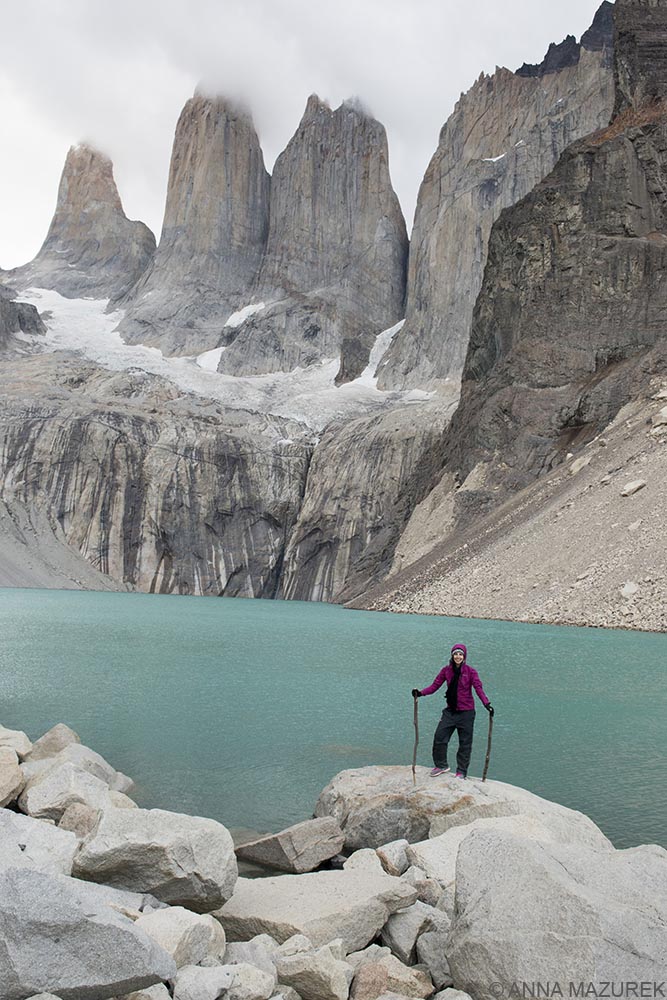
There were only a few other people so the place was fairly deserted at sunset. The light was perfect – diffused enough to eliminate any glare from the water or sky yet bright enough to showcase the three majestic stone towers and variety of colors in the rocks in the foreground. Many people want a blue sky behind the towers, which is rare since it’s often engulfed in clouds and fog as I learned when I went up for sunrise the next morning. Sunrise was freezing and the clouds never lifted enough for a clear shot. Of course, it started to snow. I was instantly grateful for the Antartica jacket a one-armed man I met at a hostel had given me when he heard I was doing the trek. (Morgan Freeman shaking his head again: “All she had besides that jacket was a $20 H&M hoodie and a raincoat.”)
After I shot this image, I ran down to the water to take more photos and had someone take one of me by the water with my lucky walking sticks. All of the pain was worth it for this moment.
Naivete is a wonderful teacher. This trek turned me into a true hiker. (Morgan Freeman: “She bought hiking boots, proper thermal layers and learned to pack lighter.”) Two and a half years later, I hiked Kilimanjaro.
(Morgan Freeman: The trail for this hike is in the shape of a W, and this spot is on the top of the far right side of the W. She started hiking on the other side of the trek (by Paine Grande) to finish the five-day hike here. This spot can be reached in roughly nine-hours hiking straight uphill on steep terrain from the trail entrance by Refugio Las Torres. If you saw how steep it was, then you’d start on the other side, too.)
I left Gertruda and Rodolfo, my trusty life-saving walking sticks, at the end of the trail for someone else to use.
Photo Notes: Ideally, I’d have shot this at a slightly smaller aperture like f/11 to get more depth of field. I was really trying to keep the ISO as low as possible.
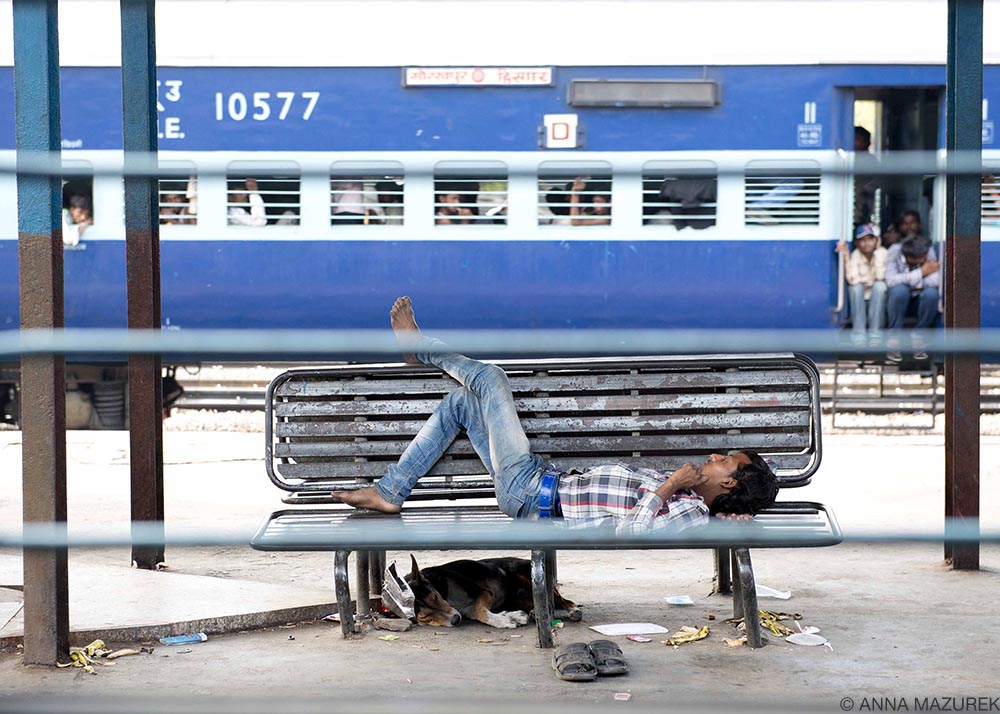
India Train Station
Exposure: f/4 at 1/250 at ISO 640; 24-70 mm lens (shot at 70mm)
The Story: I worked in India for five summers running photo trips for high school students. The staff would always fly in a week or two early for training and meetings before the students arrived. We would meet in steamy hot Delhi then travel north to the cooler temperatures of McLeod Ganj, which is located at the foothills of the Himalayas and is home to His Holiness the Dalai Lama. Normally, we rented a few jeeps with drivers for 10-12 hour journey. (Flying wasn’t an option since the only airline that flies there cancels flights too often to be reliable.) Our new director decided we should take the overnight train to the nearest station then take a taxi the remaining 90 kilometers. Since there were not enough air-conditioned sleeper car beds available, my boss booked us all in the open-air sleeper cars with three beds on each wall. (Cue Morgan Freeman: “It’s 100 degrees at midnight in Delhi in June. She was thrilled by this news.”)
I was suffering from my usual jet-lag induced headache and felt miserable. I used my silk sleeping bag liner as a makeshift bottom sheet on the slightly padded canvas slab and curled up with my inflatable airplane neck pillow. I was facing the wall and spooning my camera bag to keep it safe. I woke up at the destination station covered in dust (from the open window) that clung to our sweaty bodies like wet grass on bare feet. It rained on the return journey so we shivered all night.
When we got close to Delhi, my coworkers woke me and I started to gather my things. The train pulled up into a station as I was getting out of my bunk. I glanced out the window, which perfectly framed the most classic India photograph—a man sleeping on bench with a dog sleeping on the ground beneath him surrounded by trash and banana peels. The man’s shoes were neatly placed together beside the bench. Both the man and dog were unphased by the trains on either sides of them.
I instantly fumbled to grab my camera out my bag and adjust the exposure. I focused on composing the scene. I shot five frames before the train moved.
This photo embodies the charm and chaos of India. I’m always in awe and secretly jealous of how the locals can sleep soundly literally anywhere—on the tops of cars, concrete doorways or a grassy spot in the median of a large busy highway in the Texas-like heat.
Photo Notes: Ideally, I’d have shot this at a smaller aperture like f/7.1 or 8 but again, I only had a few minutes to shoot. Hindsight is 20/20.
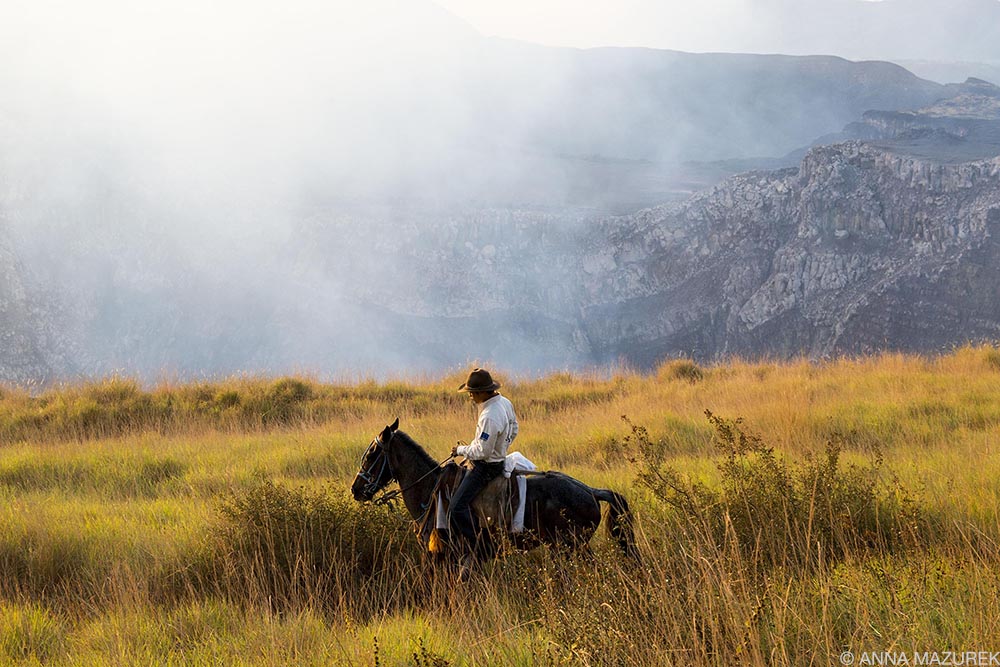
Masaya Volcano, Nicaragua
Exposure: f/6.3 at 1/400 at ISO 800; 24-70 mm lens (shot at 48mm)
The Story: I had a day to kill in Granada, Nicaragua and decided to do a day tour to the Masaya Volcano crater. (I’d spend too much time in Granada during this trip due to the logistics of meeting up with different friends. I’d exhausted most options and wanted to see most sites to make the most of my time.) I loathe day tours but didn’t have much choice due to the distance.
The smoking crater was gigantic and you could walk right up to what felt like the edge. (They would make you sign a release to do this in the U.S.!) It was a tricky place to shoot since the smoke looked like clouds or fog with no stunning foreground or background to add context to the location. I was a bit bummed by the lack of photo options.
After exploring some caves, we were walking back to the crater when I saw three men on horses riding along the edge of the crater. I literally ran down a set of stairs and across a road just in time to snap 12 frames – four of each of the three separate riders. This shot was the second rider. To me, the image was unscripted perfection due to the details of the scene— the sun highlighting the rider’s face, the bit of grass framing the top edges of his hat and the rocks peeking out from the smoke in the background on the right edge of the frame. It was my favorite shot from the entire trip to Nicaragua.
Photo Notes: Ideally, I’d have shot this at a slight smaller aperture but didn’t have a ton of time to adjust the settings when I saw the horses ride up. My ISO should have been 400, but I had just come out of a cave so my ISO was set for that.
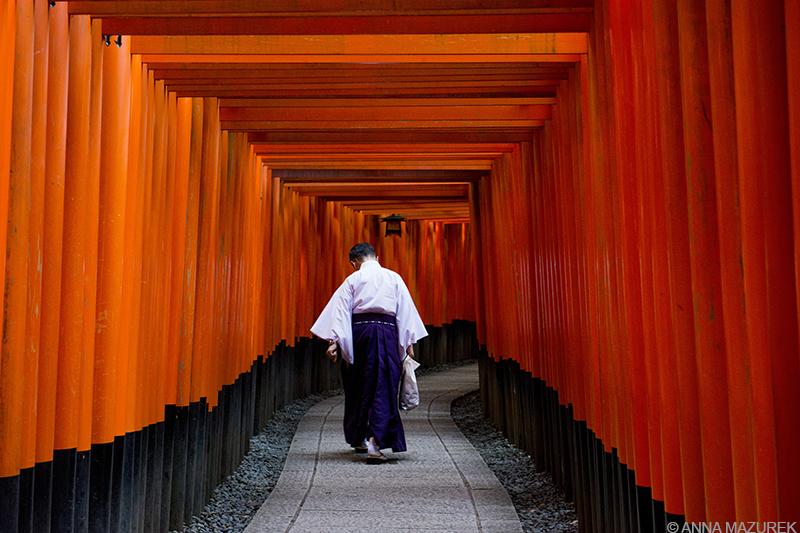
Fushimi Inari Kyoto (September 2013)
Exposure: f/6.3 at 1/60 at ISO 2500; 24-700mm lens (shot at 70mm)
The Story: One of my favorite days in Japan was my sunrise trip to the Fushimi Inari Shrine outside of Kyoto. Since it’s a popular tourist spot, I made sure to get the first train and had the place to myself for two and half glorious hours aside from a few locals. I was shooting my gnome when this man in traditional clothing rushed past me. I instantly put down the gnome and shot a few frames of him before he vanished. I could not have even posed an image this well. (For a detailed account of this trip and my 300 mosquito bites, check out this post!)
Photo Notes: Due the lack of light early in the morning and the shaded nature of the scene, I was trying my best to keep my ISO low. I was using my old D300 to shoot this, which isn’t the best camera when it comes to noise. I try to keep the shutter speed faster than 1/30 or 1/60 to avoid camera shake while I take the photo.
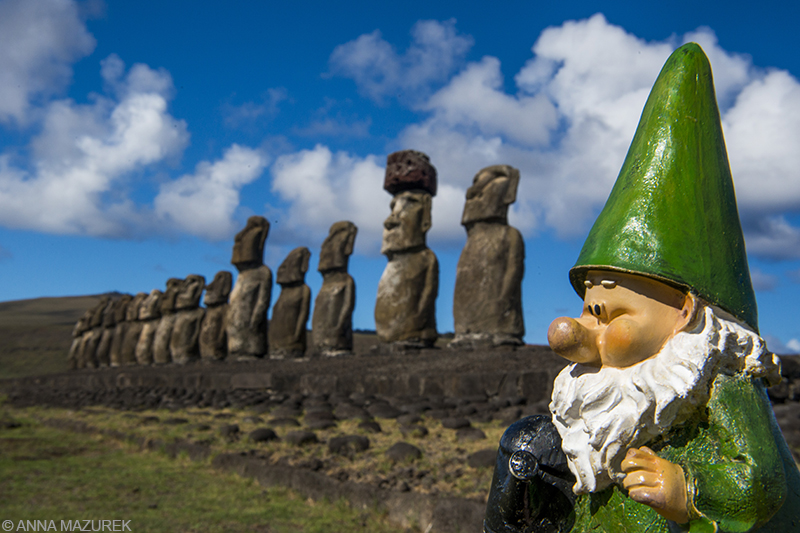
Easter Island, Chile (March 2018)
Exposure: f/22 at 1/125; ISO 400; 24-70 mm lens (shot at 36mm)
Gnome photos are complicated. While I’ve been photographing Alfred for over a decade across the world, the light has to be fairly even throughout the whole frame. It can’t be too bright or it will make his cheeks shiny, which he hates. Usually, sunrise, sunset or an overcast day is best.
In order for both Alfred and the background to be in focus, the image must be shot at a small aperture (f/16-22) for larger depth of field. This combined with the subdued lighting means I need a fairly high ISO at times. But, I can’t go too high or Alfred will look grainy.
I also have to time the shot and composition to avoid any distraction elements (i.e. people especially the ones wearing annoyingly bright colors or those who spend 45 minutes taking selfies).
The sun light only hits the faces of the statues at Ahu Tongaraki on Easter Island in the afternoon. The site also closes before sunset so I had no choice to but to shoot it in bright light. I went back three times and waited until most people had left to take the shot. I always take test shots with Alfred to get the overall background perfect. Then, I wait for the distracting elements to move. Once the background is clean, I shoot a few frames. It took a bit to get the perspective correct to line up Alfred with the statues. I was literally one of the last people leaving the site that day. This is one of my favorite gnome photos of all time. For the rest of Alfred’s travels, check out this gallery or read his biography here.
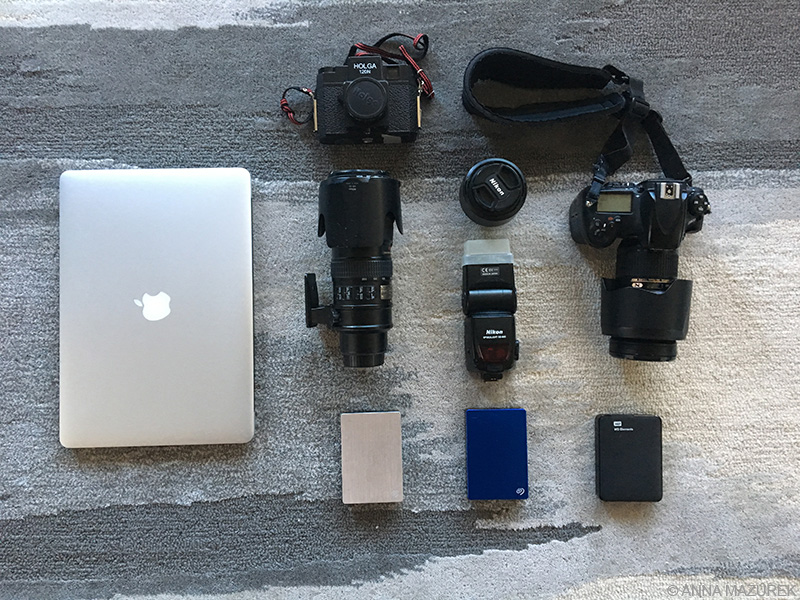
Let’s Talk Camera Gear
I want to break down the camera gear I use and take traveling and my thoughts on upgrading, which was my plan pre-COVID. And, I share my thoughts on switching to mirrorless.
I’ve always shot Nikon for digital images. (I shot film on a Minolta before I was forced to switch to digital in graduate school.) These images were all shot on either my old Nikon D300 or my current Nikon D800, a full-frame DSLR (36.3 megapixels). All of my lenses are Nikon f/2.8 including my 24-70mm, 70-200mm VR and 50 mm, which is actually a f/1.8. I also have a 24-105mm f/4 that I was forced to buy in November 2019 when the zoom on my 24-70mm jammed in Thailand. A friend was coming to visit so I bought a used Nikon 24-105mm f/4 for $600 from B&H for her to bring and sent her back with my 24-70mm (a $1,500 lens) to send to the Nikon repair place in Atlanta that I use. My goal was to sell it when I got back to America in late February but I’ve held off selling it until the economy improves. (And, I honestly like the zoom range so I don’t have to change lenses as much. But, it has a longer minimum focusing distance than my 24-70mm, which is super annoying.)
My D800 is old and I’ve been procrastinating getting a new camera body for years because I’ve been paralyzed by indecisiveness. Plus, the D800 works fine. I want a lighter-weight camera so I looked at mirrorless (Sony) but a full-frame body is only half a pound lighter. The lenses are the same weight as my current ones – you can’t make the glass lighter. I’m not a fan of the digital viewfinder on the mirrorless cameras I’ve used. It takes a while to focus, and I’ve missed shots. I also don’t like the short battery life and hate carrying around multiple batteries. (On my seven-day Kilimanjaro trek, I only needed one battery in my Nikon. Charging multiple batteries daily would be a nightmare for a lot of rural trips I take especially hikes with limited or no electricity.) Plus, if I buy Sony, I have to buy all their lenses then sell all my Nikon gear. I’m not traveling the world with two camera kits nor am I just going to leave $10K of gear in storage for most of the year. I did the math, and it would cost a good $8K to buy an equivalent Sony kit so I’d have to sell some of my current gear to justify the switch.
The other feature I want in a new camera body is better ISO range for low light. In February, I had decided to get the Nikon D850, which does better in low-light than my D800 and is compatible with all my Nikon lenses. (I rented a D850 last year and liked it.) I made this decision based on my photo work contracts for the year. Then, COVID happened, and I lost 80% of my work so I’ve held off on buying a new camera because I’m not sure what my work will look like on the other side of this. Once I get a better idea of the type of photo work I’ll be doing, then I’ll make a decision based on that. (I had been doing a lot of interior photography aside from travel so that was a big part of the consideration.) I’m planning to rent a Sony kit for a week this fall/winter to help with my decision. (I normally rent gear locally in Austin at Precision Camera or through LensRentals.com for big shoots like SXSW.)
For more photo tips, check out this post.
Got any photo questions?
Do you have any photography questions or photography topics you would like me to discuss in a future blog post? If so, then please drop me an email here!

